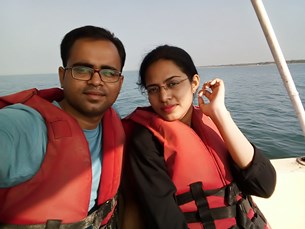Meeting
2022 ASCO Annual Meeting

Tata Memorial Centre, Mumbai, India
Ajaykumar Singh , Vijay Maruti Patil , Vanita Noronha , Nandini Sharrel Menon , Pankaj Chaturvedi , Vijayalakshmi Mathrudev , Atanu Bhattacharjee , Sunil Ramdhan Chopade , Sujay Srinivas , Somnath Roy , Tanmoy Mondal , Hollis D'souza , Devendra A Chaukar , P. S. Pai , Sudhir Vasudevan Nair , Shivakumar Thiagarajan , Sarbani Laskar , Kavita Prakash Nawale , Sachin Babanrao Dhumal , Kumar Prabhash
Background: Neoadjuvant chemotherapy (NACT) with DCF (Docetaxel, Cisplatin, and 5FU) is one of the treatment options in very locally advanced oral cancer (LAOC) and has a survival advantage over the CF (Cisplatin and 5FU) regimen. DC regimen (Docetaxel, Cisplatin) had shown promising results in small series, with a lower rate of adverse events but has never been compared with DCF. Methods: This was a phase 3 open-label superiority randomized study. Adult patients with very LAOC (technically unresectable), ECOG PS 0-2 and adequate organ function were eligible. They were randomly assigned in a 1:1 fashion to either DCF or DC regimen. After the administration of 2 cycles, these patients were evaluated in the multidisciplinary clinic. Based on the response, further treatment either surgery followed by adjuvant or radical chemoradiation or palliative therapy was planned. The primary endpoint was overall survival (OS). The key secondary endpoint was adverse events. Results: 495 patients were randomized in this study, 250 patients in arm A and 245 in arm B. At a median follow-up of 39.5 months. The 2-year OS was 29.1% in the DCF and 23.5% in the DC arm respectively (HR=0.81; 95%CI 0.66-0.99, P-value= 0.043). Grade 3 or above adverse events were higher in the DCF arm - oral mucositis (10.6% versus 1.2%), diarrhea (13.6% versus 9.6%), febrile neutropenia (23.2% versus 2.6%), hyponatremia (40.8% versus 20.8%), and hypokalemia (17.9% versus 1.6%). Conclusions: NACT with DCF has a survival benefit over DC in oral cancers but it comes at the cost of an increment in acute adverse events. Clinical trial information: CTRI/2016/04/006804.
Disclaimer
This material on this page is ©2024 American Society of Clinical Oncology, all rights reserved. Licensing available upon request. For more information, please contact licensing@asco.org
2022 ASCO Annual Meeting
Poster Discussion Session
Head and Neck Cancer
Head and Neck Cancer
Local-Regional Disease
CTRI/2016/04/006804
J Clin Oncol 40, 2022 (suppl 16; abstr 6013)
10.1200/JCO.2022.40.16_suppl.6013
6013
5
Abstract Disclosures
2024 ASCO Gastrointestinal Cancers Symposium
First Author: Takahiro Tsushima
2024 ASCO Gastrointestinal Cancers Symposium
First Author: Mikako Tamba
2024 ASCO Annual Meeting
First Author: Hojung An
2024 ASCO Gastrointestinal Cancers Symposium
First Author: Rixci Ramirez